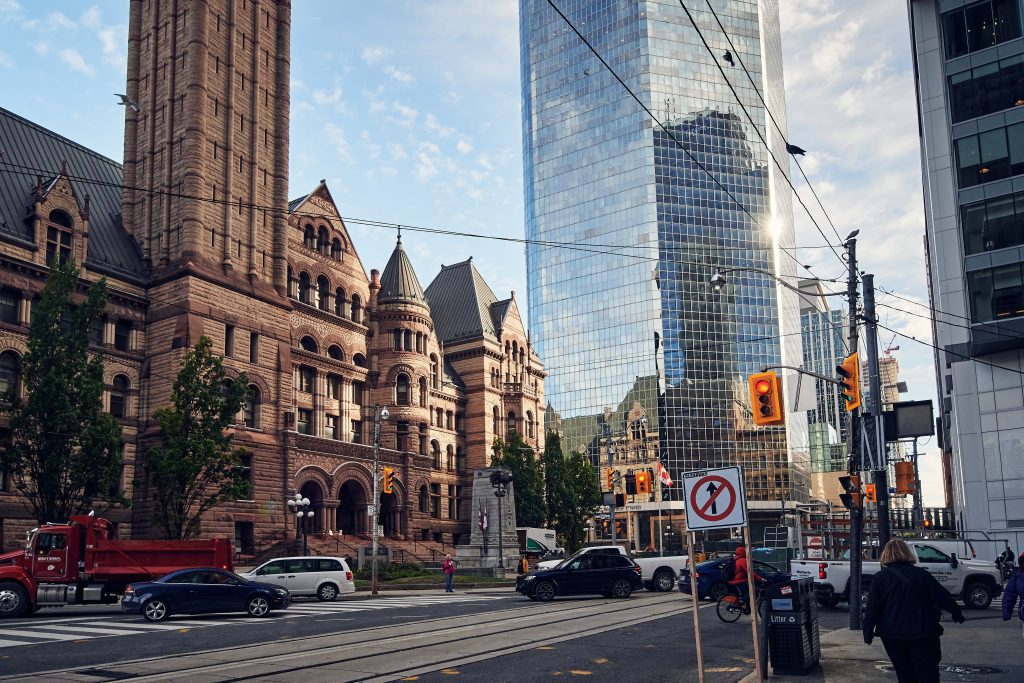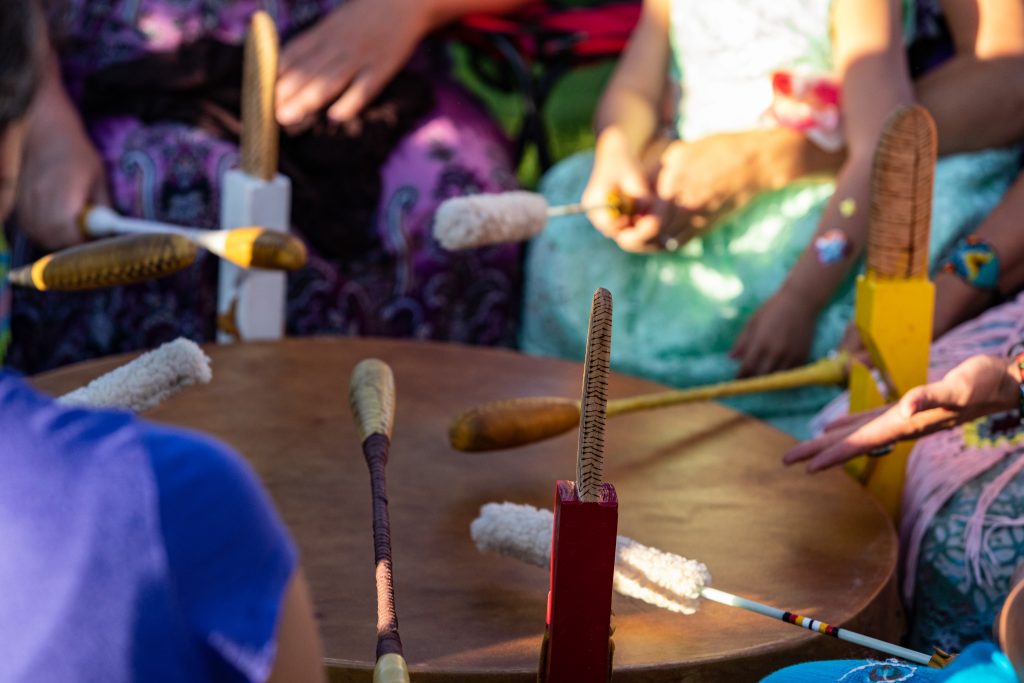Introduction
The introduction of Indigenous-based courts in Canada is a significant development in terms of recognizing and incorporating Indigenous-based legal approaches into Canada’s non-Indigenous criminal justice system. However, at present no Indigenous group or First Nation can enact criminal laws in Canada. The shift towards full Indigenous self-governance has yet to be achieved within the criminal justice realm. This blog explores the establishment of Indigenous-based courts and the avenues to achieve Indigenous self-governance over criminal law in Canada.
Indigenous Courts in Canada Today
Indigenous-based courts in Canada are continuing to grow in numbers but are not yet readily available in all provinces. Newfoundland and Labrador and Prince Edward Island have Indigenous court worker programs offering culturally appropriate supports to Indigenous peoples in the criminal justice system, but neither province has courts specifically designated as Indigenous. Manitoba, second only to Ontario in total Indigenous population, also currently does not have any designated Indigenous-based courts, despite repeated calls by Indigenous leaders for their implementation.

The lack of Indigenous-based courts in Manitoba is particularly surprising, especially given the results of a 2019 report prepared by Statistics Canada which revealed that Manitoba had the highest incarceration rate in the country – 231 adults per 100,000 – with roughly three quarters of inmates being Indigenous, despite this group making up only 15% of the population. The province has held the position for the highest incarceration rates since at least 2006. According to federal data, it is estimated that in Manitoba’s largest federal penitentiary, the Stony Mountain Penitentiary, 70 to 75% of inmates are Indigenous. This overrepresentation, and the need for Indigenous-based courts in the province, is viewed as increasingly urgent.
Territorial Court Systems
In the Canadian territorial court system, there are also no courts that are specifically designated as Gladue or Indigenous. Instead, Indigenous law is adjudicated through negotiated self-government agreements or through existing “non-Indigenous” territorial courts. In the Yukon, the 1994 Yukon Umbrella Final Agreement formally recognizes the First Nation right to self-government and their lawmaking authority. Several Indigenous communities have subsequently negotiated administration of justice agreements with the territorial and federal governments, creating their own courts that operate in concert with the territorial system.
Some Indigenous communities in the Northwest Territories have also negotiated self-government agreements, including the Délı̨nę First Nation, where Indigenous law is adjudicated pursuant to the 2015 Délı̨nę Final Self-Government Agreement. In Nunavut, on the other hand, although it is not specifically designated as a Gladue or Indigenous court, the Nunavut Court of Justice is often considered to be a Gladue court because it “serves mainly Inuit, and resident judges have a ‘depth and breadth’ of experience in an Inuit context.”
In the remaining provinces, there exists a diversity of Indigenous-based courts available to meet the unique needs of different Indigenous communities. These courts are tasked with ensuring that sufficient consideration is given to the unique circumstances of Indigenous persons facing the criminal justice system and within a culturally appropriate environment.
Examples of Indigenous-based Courts in Canada
The Gladue Court at Old City Hall (OCH) in Toronto, Ontario
Beginning its operations in 2001, and being the first of its kind in Ontario, the Gladue court at OCH is a sentencing and bail hearing court that is both voluntary and open to all self-identifying Indigenous persons. The Court aims to incorporate Indigenous values, principles, and conceptions of justice into court processes and proceedings. Personnel at the Court, including judges, Crown attorneys, and duty counsel, all receive Gladue-related training. Specially trained Indigenous court workers also play a critical role working with Indigenous peoples facing criminal charges. Indigenous persons facing charges are expected to take responsibility for their criminal behaviour, which often involves entering a formal guilty plea, as well as obtaining the consent of a Crown attorney, before their matter is referred to Gladue court.

First Nations’ Courts in British Columbia
There are currently four First Nations Gladue courts in British Columbia, located in North Vancouver, Duncan, Kamloops and New Westminster. Two more have been proposed, by the Tsilhqot’in National Government and Sto:lo Tribal Council. Like Gladue courts in Ontario, Indigenous people who have pled guilty to a criminal offence can be referred to a First Nations court for most bail and sentencing hearings. Taking a restorative justice approach, judges hear from offenders, victims, their respective family, friends, and community members, Crown attorneys, defence counsel, and others involved in the court process. The latter includes Elders, social workers, Indigenous court workers, counsellors, probation officers and police. The goal is to craft a healing plan that helps the offender, the victim and the community. In doing so, the offender takes responsibility for their criminal behaviour and works through the root causes of the offence itself. An offender can be asked to return to court, potentially on multiple occasions, to update the judge on their healing plan progress.
The Cree and Dene Courts in Saskatchewan
The Cree-speaking Court is based in Prince Albert and was established in 2001. It is composed of Cree judges, clerks, Crown attorneys, legal aid lawyers and victim services workers who travel to serve nearby Indigenous communities, including Pelican Narrows, Sandy Bay, Montreal Lake and Big River First Nations. The peacemaking process is used by the Court where the situation permits. The Dene-speaking Court in Meadow Lake was established in 2006 and provides services in both the Cree and Dene languages with the assistance of translators, employing a restorative approach.
Indigenous-based courts are important advancements for accommodating Indigenous legal perspectives in the non-Indigenous criminal justice system, but they remain an incomplete response to the Truth and Reconciliation movement in criminal law. While Indigenous-based courts may be transforming the power dynamics in the courtroom and infusing the sentencing process with Indigenous legal traditions and cultural practices, the question remains if they are merely reinforcing the current colonial system rather than truly challenging it. Indigenous-based courts typically operate within existing provincial and federal legal frameworks and are generally limited to sentencing and bail hearings. They are also generally limited to less serious criminal offences that often do not carry the possibility of a lengthy sentence. Overall, existing Indigenous-based courts in Canada are currently not capable of full governance given such limitations.
The Indigenous Courts of Tomorrow: The Path to Self-Governance
The existence of Indigenous-based courts in Canada is a significant step towards Reconciliation. They are an important means of addressing and beginning to curtail the issues of systemic discrimination inherent in the colonial criminal justice system and the overrepresentation of Indigenous peoples in Canada’s custodial institutions. However, full Indigenous self-government over criminal law in Canada remains non-existent.

Currently, no Indigenous group can enact criminal laws in Canada. This includes First Nations established under the Indian Act as well as self-governing Nations that exercise legislative powers under a self-government agreement. Existing Indigenous-based courts are largely characterized as having legislative or other powers of an administrative or regulatory nature, as opposed to powers of a penal nature. Indigenous groups assist in the administration of justice but do not create their own criminal laws.
In the Aboriginal Justice Inquiry of 1991, Al Hamilton and the Honourable Murray Sinclair stated:
“Aboriginal communities must have the right, as part of self-government to establish their own rules of conduct, to develop means of dealing with disputes (such as courts and peacemakers), appropriate sanctions (such as holding facilities and jails), and the full range of probation, parole, counselling and restorative mechanisms once applied by First Nations… in establishing a system of justice for Aboriginal people, the laws enacted by Aboriginal peoples themselves, or deliberately accepted by them for their purposes, must form the foundation of the system’s existence.”
Several avenues for achieving Indigenous self-government over criminal law in Canada have been identified. For example, implementing federal legislation informed by Indigenous Peoples is considered to be one of the more viable means for establishing separate Indigenous justice systems. Federal legislation of this kind would need to be incorporated into Canada’s constitutional framework, largely through the doctrine of cooperative federalism, and would need to recognize the Indigenous right to self-government as inherent rather than delegated by an existing non-Indigenous Canadian authority.
An Act respecting First Nations, Inuit and Métis children, youth and families (“the Act”)is a landmark piece of legislation reflecting Canada’s attempt to implement its obligations under the United Nations Declaration on the Rights of Indigenous Peoples (UNDRIP) and the Truth and Reconciliation Commission of Canada’s (TRC) Calls to Action – both of which are examples of federal legislation informed by Indigenous Peoples to achieve self-governance.
On February 9, 2024, the SCC released its highly anticipated decision on the constitutionality of the Act. The Court unanimously upheld the validity of the Act, reinforcing the authority of Indigenous governing bodies to enact and enforce their own child and family services laws pursuant to the Act. Although the SCC did not pronounce on the issue of the inherent right of self-governance under section 35 of the Constitution Act, 1982, the ruling still represents a critical development in Indigenous self-governance and an important step in the acknowledgment and recognition of Indigenous laws within Canadian federalism. It also removes a considerable degree of legal uncertainty regarding the status of Indigenous laws enacted pursuant to the Act and reaffirms that such laws have paramountcy over provincial laws in the event of a conflict.

Conclusion
Since the Act’s proclamation in 2020, over 50 Indigenous groups have undertaken to draft laws, prepare for and assert jurisdiction, and enter into coordination and funding agreements with the provincial and federal governments. The development and implementation of the Act could be used as a model for shaping the future of Indigenous-based courts and providing them with the ability to self-govern over criminal law. Until true self-governed and self-determined Indigenous justice practices become reality, transformative reconciliation within Canada’s criminal justice system will remain elusive.










Share the article